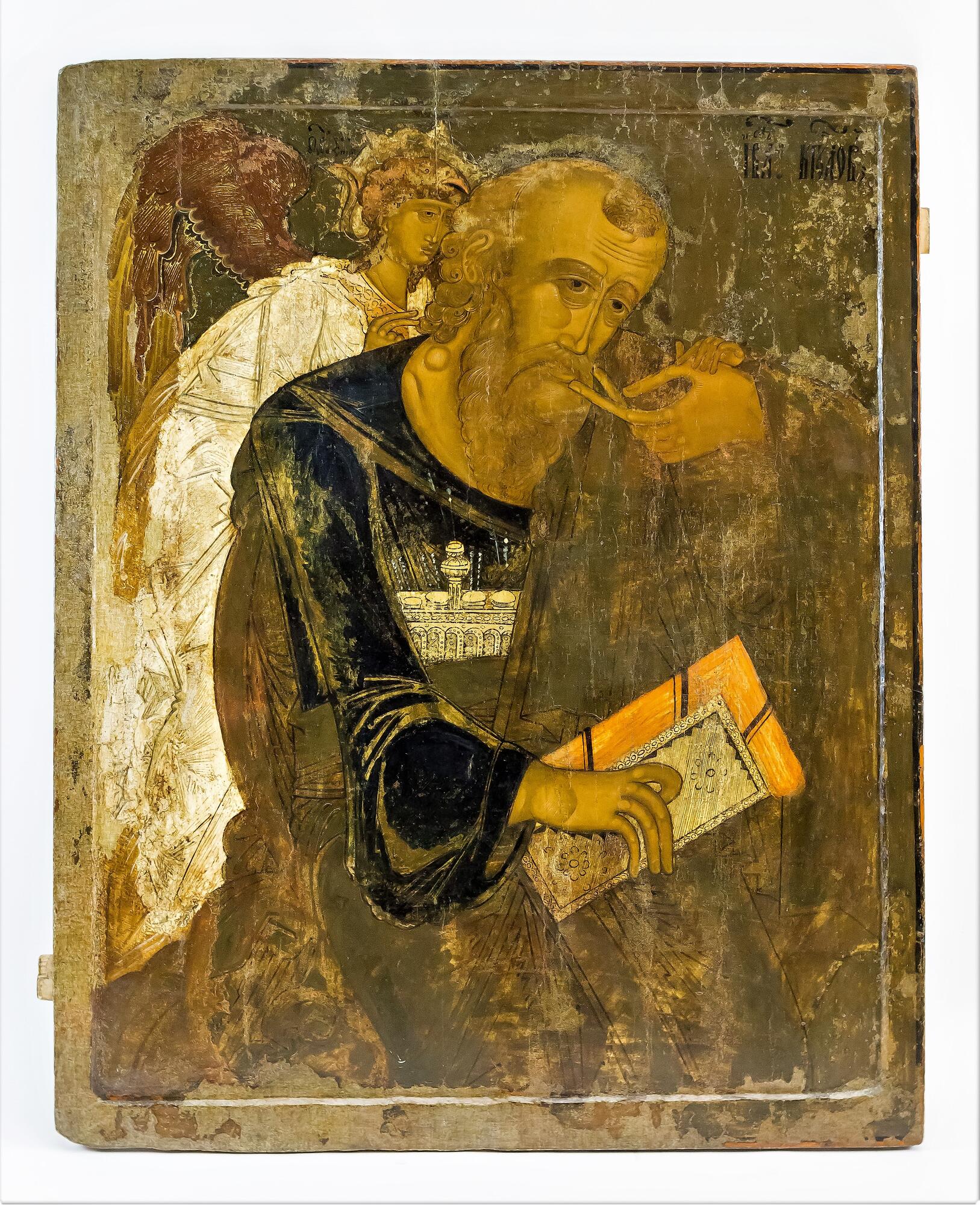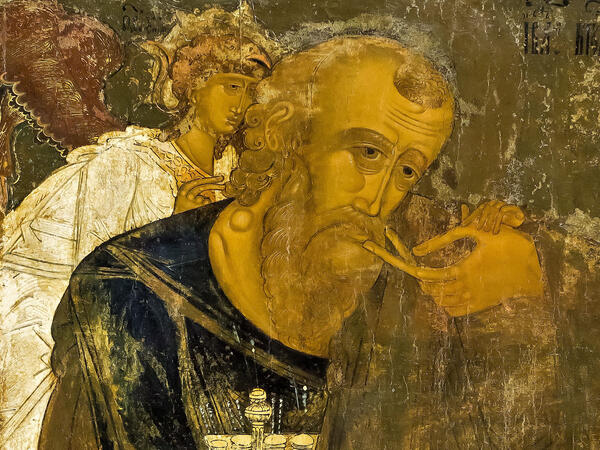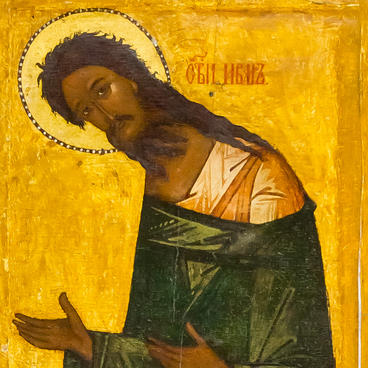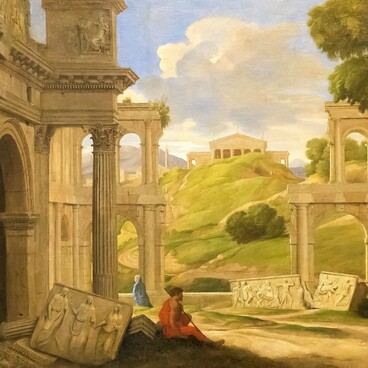The icon ‘St John the Theologian in Silence’ was painted in the second half of the 16th century. It comes from the bottom row of the iconostasis of the Trinity Monastery of St. Sergius in Sviyazhsk.
The icon depicts the holy apostle and evangelist John the Theologian who was born in Bethsaida. His parents’ names were Zebedee and Salome. He and his elder brother Jacob were called by Jesus Christ to the apostolic ministry and witnessed the Transfiguration and Crucifixion. In the Apostolic Church, he was given the name of the Theologian. The New Testament includes the fourth Gospel and the Book of Revelation (or the Apocalypse of John) written by the Apostle John, as well as his three conciliar epistles.
This type of iconography began taking shape at the end of the 15th century, when the first illustrated manuscripts of the Apocalypse appeared. At that time, the public interest in the Apostle John’s personality increased — his prophecies about ‘the end times’ did not go amiss in the period of the heretical activities and the fear of the apocalypse. The icon from Sviyazhsk stands out among the famous contemporary works of the same name for its distinct style and iconography.
The Apostle is pictured at the moment of accepting Grace — he touches the mouth with his left fingers in sign of silence. The composition of St. John sitting while turning to the right is rare — usually artists paint him turned to the left. Another icon’s feature is the closed Gospel in his right hand. This type of iconography more often depicts the opened Gospel reading, “In the beginning was the Word”. The closed Book symbolizes the mystery of the Divine Revelation. Behind the saint’s right shoulder there is an Angel with a halo shaped as an eight-pointed star which stands for Sophia — the Wisdom of God.
The Evangelist is portrayed in dark clothes — a blue shirt with wide sleeves and a green cloak. The colors of the clothes and the background constitute one harmonious color scheme to create the sense of authenticity.
According to church legend, John the Theologian wrote his Revelation in a cave on the island of Patmos. Later, a temple was built on that spot. Another distinct feature of the icon is an inkstand in the folds of the saint’s robe in the form of an unusual “Old Testament temple” — a symbol of the Heavenly Jerusalem.
The icon was first mentioned in the Inventory of the Trinity Monastery of St. Sergius in 1641. In the 18th century, the icon was repainted in oil. In 1981–1985, the oil layer was removed during the restoration by the Interregional Special Scientific Restoration Workshop of the Rosrestavratsiya association. The revetment of the icon has not survived.
The icon depicts the holy apostle and evangelist John the Theologian who was born in Bethsaida. His parents’ names were Zebedee and Salome. He and his elder brother Jacob were called by Jesus Christ to the apostolic ministry and witnessed the Transfiguration and Crucifixion. In the Apostolic Church, he was given the name of the Theologian. The New Testament includes the fourth Gospel and the Book of Revelation (or the Apocalypse of John) written by the Apostle John, as well as his three conciliar epistles.
This type of iconography began taking shape at the end of the 15th century, when the first illustrated manuscripts of the Apocalypse appeared. At that time, the public interest in the Apostle John’s personality increased — his prophecies about ‘the end times’ did not go amiss in the period of the heretical activities and the fear of the apocalypse. The icon from Sviyazhsk stands out among the famous contemporary works of the same name for its distinct style and iconography.
The Apostle is pictured at the moment of accepting Grace — he touches the mouth with his left fingers in sign of silence. The composition of St. John sitting while turning to the right is rare — usually artists paint him turned to the left. Another icon’s feature is the closed Gospel in his right hand. This type of iconography more often depicts the opened Gospel reading, “In the beginning was the Word”. The closed Book symbolizes the mystery of the Divine Revelation. Behind the saint’s right shoulder there is an Angel with a halo shaped as an eight-pointed star which stands for Sophia — the Wisdom of God.
The Evangelist is portrayed in dark clothes — a blue shirt with wide sleeves and a green cloak. The colors of the clothes and the background constitute one harmonious color scheme to create the sense of authenticity.
According to church legend, John the Theologian wrote his Revelation in a cave on the island of Patmos. Later, a temple was built on that spot. Another distinct feature of the icon is an inkstand in the folds of the saint’s robe in the form of an unusual “Old Testament temple” — a symbol of the Heavenly Jerusalem.
The icon was first mentioned in the Inventory of the Trinity Monastery of St. Sergius in 1641. In the 18th century, the icon was repainted in oil. In 1981–1985, the oil layer was removed during the restoration by the Interregional Special Scientific Restoration Workshop of the Rosrestavratsiya association. The revetment of the icon has not survived.



